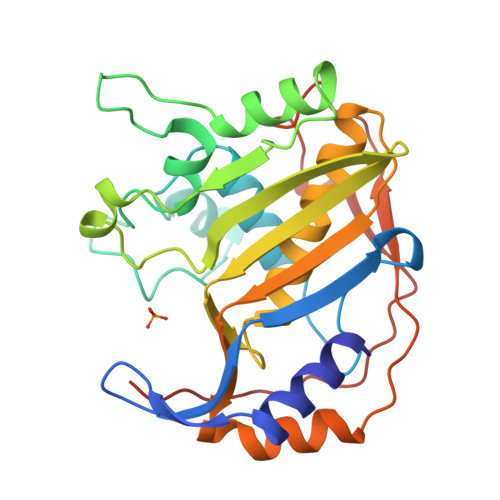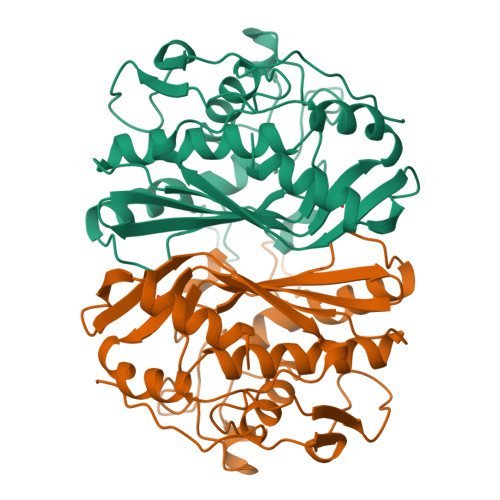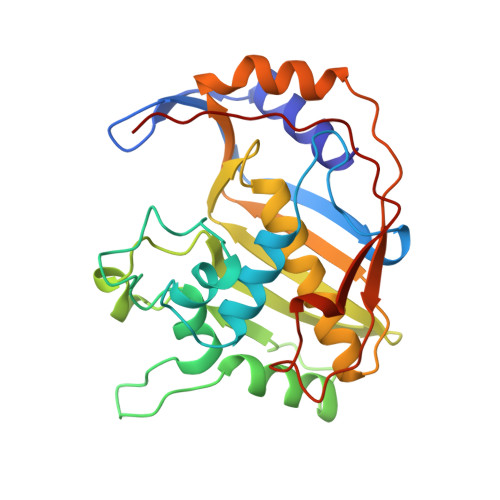Inactivity of N229A thymidylate synthase due to water-mediated effects: isolating a late stage in methyl transfer.
Reyes, C.L., Sage, C.R., Rutenber, E.E., Nissen, R.M., Finer-Moore, J.S., Stroud, R.M.(1998) J Mol Biol 284: 699-712
- PubMed: 9826509
- DOI: https://doi.org/10.1006/jmbi.1998.2205
- Primary Citation of Related Structures:
1BQ1, 1BQ2 - PubMed Abstract:
Mutation of thymidylate synthase N229(177) to alanine results in an essentially inactive enzyme, yet it leads to formation of a stable ternary complex. The kinetics of N229(177)A show that kcat for Escherichia coli is reduced by 200-fold while the Km for dUMP is increased 200-fold and the Km for folate increased by tenfold versus the wild-type enzyme. The crystal structures of N229(177)A in complex with dUMP and CB3717, and in complex with dUMP alone are determined at 2.4 A, and 2.5 A resolution. These structures identify the covalently bound ternary complex and show how N229(177)A traps an intermediate, and so becomes inactive in a later step of the reaction. Since the smaller alanine side-chain at N229(177)A does not directly sterically impair binding of ligands, the structures implicate, and place quantitative limits on the involvement of the structured water network in the active site of thymidylate synthase in both catalysis and in determining the binding affinity for dUMP (in contrast, the N229(177)V mutation in Lactobacillus casei has minimal effect on activity).
Organizational Affiliation:
Graduate Group in Biophysics, University of California, San Francisco 94143-0448, USA.

















